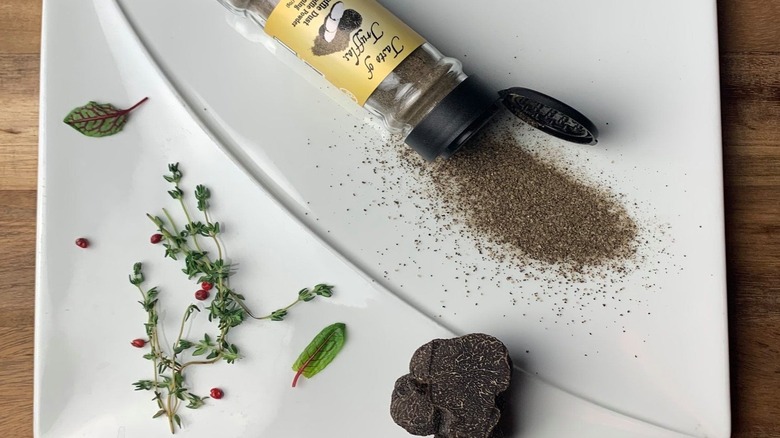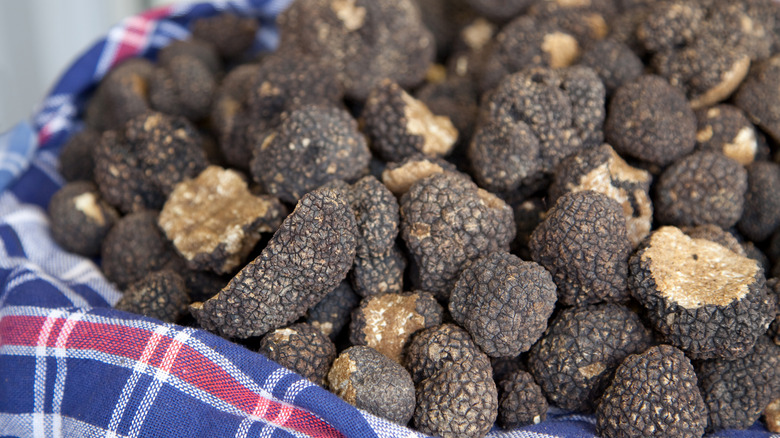The Shady Ingredients Potentially Hiding In Your Truffle Powder
Truffles have a long history, even before they became commonplace in haute cuisine. They are notoriously expensive, with some varieties selling for more than $4,000 per pound. The high price tag can be explained by the difficulty of finding these elusive tubers and because they are so hard to reproduce. Due to their high price point, many cooks opt for synthetic truffle powder instead. However, some of the ingredients may come as a surprise.
Truffle powders are made with chemicals like 2,4-dithiapentane, a colorless compound with strong aromatics and a mild aroma that is comparable to mustard. Unfortunately, many manufacturers use it without labeling the product as synthetic. Even though it's safe for consumption, it adds a false aroma and taste of truffles that detracts from the real thing. It's almost like the artificial chemical tries too hard to replicate a real truffle. Instead of infusing the subtle earthy notes of the highly prized ingredient, it adds a pungent profile that is overwhelming. Truffle powder enhances food with umami notes, but it should be used sparingly as a garnish.
Does truffle powder contain actual truffles?
Commercial truffle powders include slightly different ingredients, such as fine sea salt, potato flour, rice flour, carob powder, dried mushrooms, and dried truffles. Most of the umami flavor in truffle powder comes from carob powder, which is made from roasted carob pods and resembles cocoa powder. It is usually used as a sweetener in baked goods but is added to truffle powder to infuse it with a roasted and nutty flavor. Defining the actual taste of truffles is difficult, but they share some of the flavor characteristics of mushrooms. For this reason, button mushrooms are often added to lend a gamey taste.
Nevertheless, the flavor profile of truffle powder isn't quite the same as the real deal. Still, it has some benefits, such as its affordability, availability, and convenience. You can easily find the product online and in local grocery stores, and many cooks add them to soups, eggs, and potatoes for an extra touch of umami.

